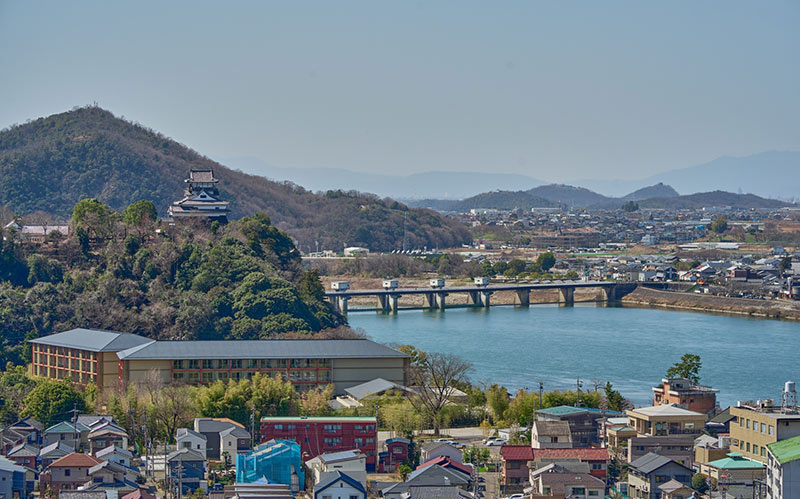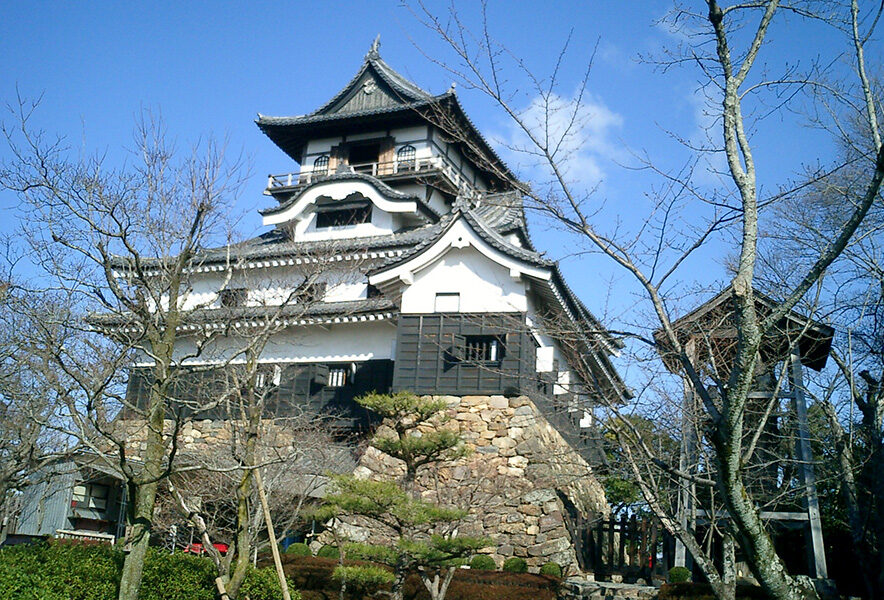- What kind of castle is “Inuyama Castle”? A castle whose keep is designated as a National Treasure
- What is the history of Inuyama Castle? A very important stronghold built on the border!
- Access to Inuyama Castle
- Parking around Inuama Castle
- Inuyama Castle Official Website
- Recommended around Inuyama Castle
What kind of castle is “Inuyama Castle”? A castle whose keep is designated as a National Treasure
“Inuyama Castle” was a flat mountain castle located in present-day Inuyama City, Aichi Prefecture, and is also known as “Hakutei Castle.
It is the castle where Liu Bei Xuande, a hero in the “History of the Three Kingdoms,” is said to have died, and stands on a hill upstream from the Yangtze River.
Like this Hakutei Castle, “Inuyama Castle” is built on an 88-meter-high hill on the banks of the Kiso River.
It is said that when the Edo period Confucian scholar, Ogyu Sorai, saw the castle, he named it after Li Bai’s poem about the castle, “Early departure from White Castle”.
Inuyama Castle is one of the “12 existing castles” and is one of the five castles whose keep has been designated a national treasure.
An existing castle tower is one that was built before the Edo period and still remains today. (*Examples: Hirosaki Castle, Matsumoto Castle, Himeji Castle, etc.)
Inuyama Castle, Himeji Castle, Matsumoto Castle, Hikone Castle, and Matsue Castle are designated as National Treasures.
Inuyama Castle” was privately owned until 2004, and is the last privately owned castle in Japan.

What is the history of Inuyama Castle? A very important stronghold built on the border!
It is said that “Inuyama Castle” was first built in 1537 by Oda Nobuyasu (Oda Nobunaga’s uncle) after renovating a fortress.
It is also said that up to the second floor of the existing castle tower was built at this time.
Inuyama Castle was located near the border of neighboring Mino (southern Gifu Prefecture), and was therefore an important base for keeping track of the movements of the Mino Saito clan.
In 1564, Nobunaga Oda attacked and defeated the castle’s owner, Nobuakiyo Oda (son of Nobuyasu Oda and cousin of Nobunaga Oda), who had turned to the Mino Saito clan.
Thereafter, the castle was held by Oda Nobunaga’s chief vassal, Ikeda Tsuneoki, and his son, Oda Katsunaga.
After the death of Nobunaga Oda, the castle came into the possession of Nobuo Oda (Nobunaga’s second son) at the Kiyosu Conference, but after the Battle of Komaki-Nagakute (Hideyoshi Hashiba vs. Nobuo Oda and Ieyasu Tokugawa) in 1584, it became the castle of Hideyoshi Hashiba (Toyotomi).
After the Battle of Sekigahara in 1600, the castle became a shogunate castle, and during the Edo period, nine generations of the Naruse clan, the retainers of the Owari domain, served as the castle’s lords until the Meiji period.
It is also said that the castle took its present form around 1617.
In the Meiji period (1868-1912), the castle was almost completely demolished except for the castle tower due to the abolition of the domain in 1871.
However, some castle gates were relocated as temple gates.
Access to Inuyama Castle
65-2, Kitakoten, Oaza Inuyama, Inuyama City, Aichi Prefecture, 484-0082, Japan
Parking around Inuama Castle
Inuyama Castle Official Website
Official Website:https://inuyamajo.jp
